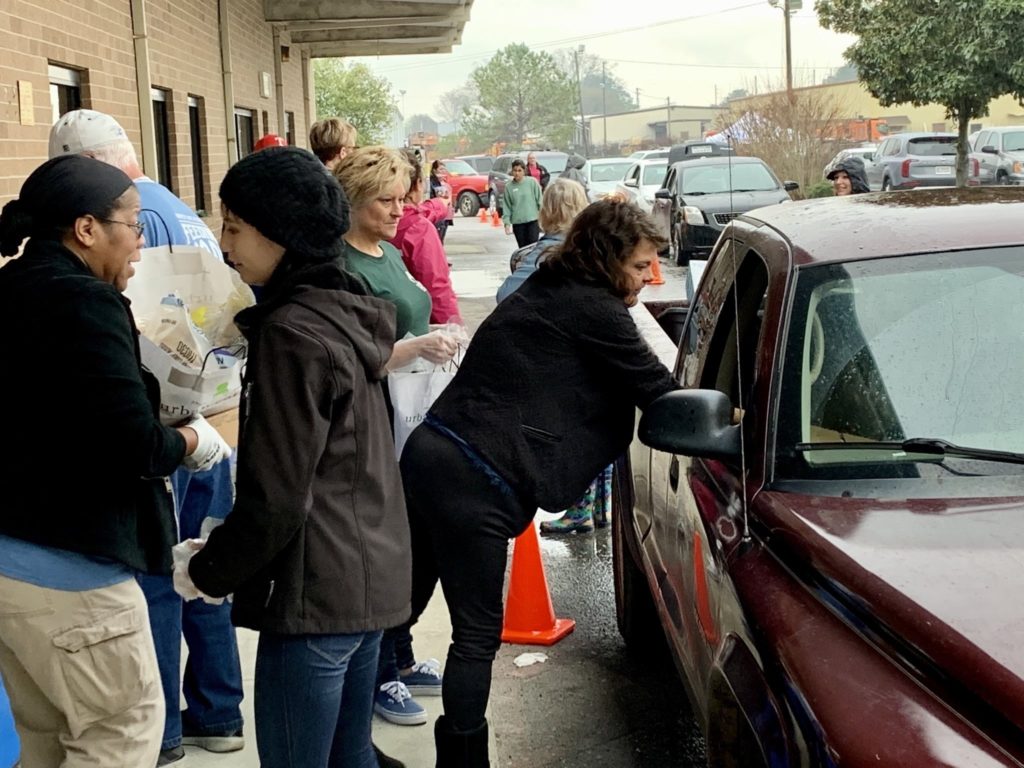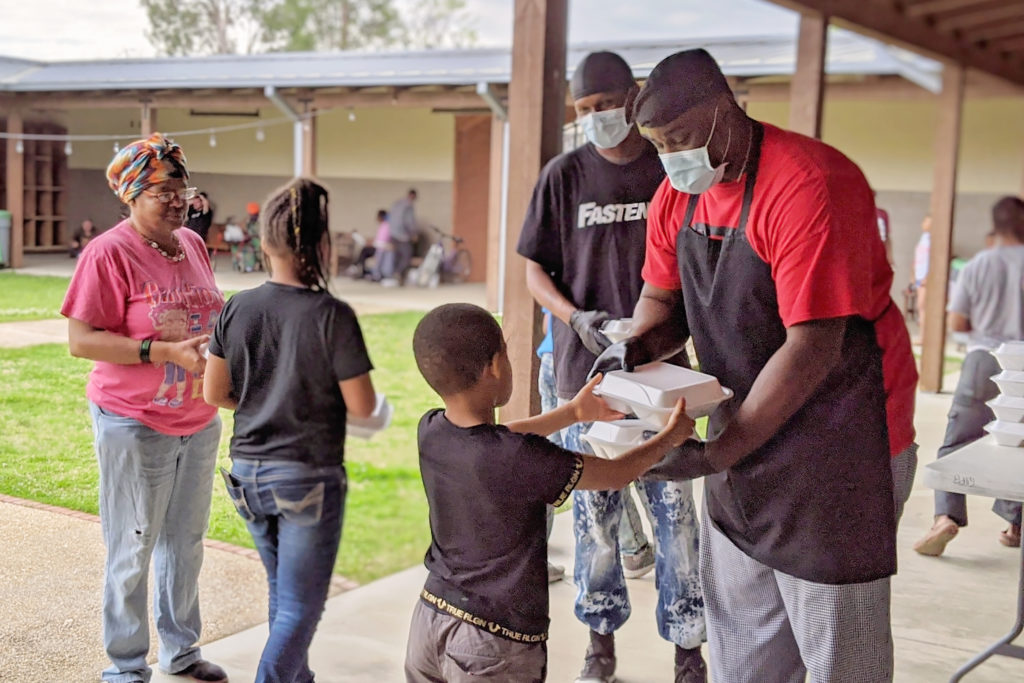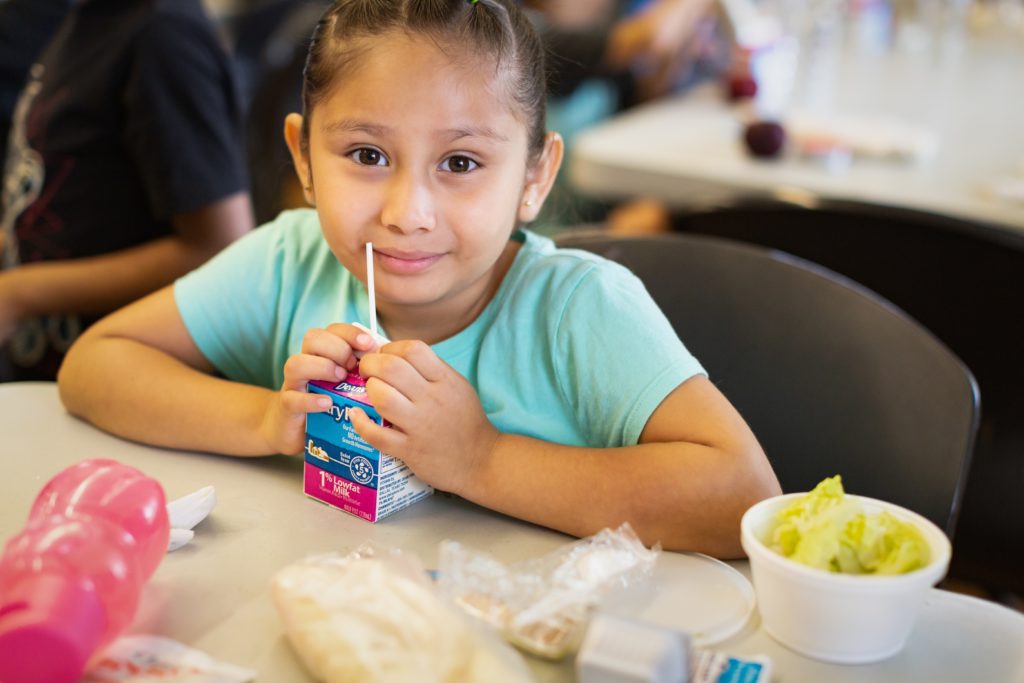Coming Together for Feeding America
The impact coronavirus has had so far on the world has been immense. We hear about the toll it takes on hospitals and medical staff, and we feel the effect it has on our economy. Before the coronavirus started spreading, one out of every nine people in the United States struggled with hunger. Now with businesses shutting down, school closures, lack of paid sick leave, the situation is growing more dire. While the country faces the growing challenges of dealing with the coronavirus, nonprofit organizations like Feeding America are here to help with hunger. To provide support, Custom Ink has created a fundraiser with great designs on lots of different products to benefit Feeding America.
Feeding America began in the 1960s when retired businessman John van Hengel started volunteering at a local soup kitchen in Phoenix, Arizona. After reaching out to the community for donations, he ended up with far more food than the soup kitchen could handle. In addition to this excess, he found out about good food being discarded by grocery stores. Using all this collected food in addition to unwanted-yet-edible food from farms and local gardens, he established St. Mary’s Food Bank in Phoenix. St. Mary’s became the first food bank in the country in 1967, delivering 275,000 pounds of food to those in need that same year.




Volunteers and staff at Harvest Hope Food Bank in Richland County, South Carolina, distribute food at a drive-up distribution.
A few years after this success, St. Mary’s Food Bank received a federal grant in 1975 towards developing other food banks across the rest of the United States. In 1979, van Hengel created Second Harvest, an organization to serve and network the food banks across the nation. Over the years Second Harvest expanded and underwent a few name changes to become the second-largest U.S. charity by revenue according to Forbes. As of 2008, it has been known as Feeding America.
Currently, Feeding America is comprised of over 200 food banks across the states, where they feed over 40 million people. While serving this community, Feeding America focuses on providing healthy, nutritious options such as fresh produce, lean protein, low-fat dairy, and whole grains. Over the years. Feeding America has attempted to emphasize more perishable options to accommodate for healthier eating, all while maintaining rigorous safety standards.
Beyond providing food, Feeding America works to end hunger by raising awareness about the issue and advocating for those that experience it. Through media donations, Feeding America runs public service announcements to engage the public. In Washington, D.C. they advocate for programs to protect this community and run the Hunger Action Center online to raise funds and organize volunteers to help their cause. Feeding America also utilizes donations to invest in research initiatives, such as Map the Meal Gap and the Hunger in America Study. Both of these collect data to help guide Feeding America’s decision-making and planning when they want to ensure the best use of their funds and helps provide information on what factors cause people struggling with hunger to use private and nonprofit organizations and government programs.
Food insecurity is as varied as the population of the United States. While children and the elderly count amongst the vulnerable groups that Feeding America serves, it provides aid to the entire country regardless of age and location. Many of the people affected by food insecurity do not actually qualify for government programs and must rely on local food banks and other hunger relief organizations like Feeding America for support. Their network of food banks and food pantries, including mobile food pantries in more remote areas, prove invaluable to many across the country.
In addition to providing food for those that need it, Feeding America also saves good food from going to waste. With an estimated 25-40% of the food that is grown and harvested in the United States going to the trash, it only makes sense to put this food to its intended use. Rather than have 72 billion pounds of food go to waste every year, Feeding America works with the distributors, farmers, and companies to rescue this food and give it to those in need.




Chef Grant hands a plate of rice, beans, tortillas, salsa and cheese to a boy at The Masters Table, a soup kitchen in Augusta, Georgia. The program has moved to an outdoor service model so that it can more safely serve guests. They eat at church pews in the courtyard in groups of 25-30. Staff wears masks and gloves to increase food safety.
With many Americans living without ready access to food, the coronavirus hits hard. Organizations like Feeding America have become more important than ever as even basic human needs are at risk due to the virus’ disruption in our daily lives. While Feeding America receives a large amount of assistance from the government and manufacturing, the largest amount of its donations are provided from retail donations from individuals. In this time of uncertainty, the human need for food remains constant—making any donation that much more important right now.
Check out Custom Ink’s Feeding America fundraiser and lend your support, or get started creating on your own coronavirus t-shirts.



Leave a Comment